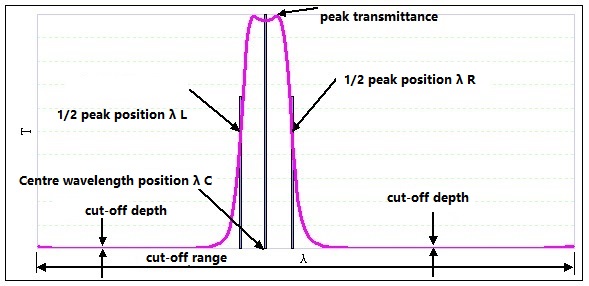ISO9001 Certified Professional Manufacturer & Supplier of Optics
+86-0431-87911611 admin@ytoptics.com
Contact us
-
 Email: admin@ytoptics.com
Email: admin@ytoptics.com
-
 Tel:86-0431-87911611
Tel:86-0431-87911611
-
 Add: 2# Automotive Innovation
Add: 2# Automotive Innovation
Jilin Province, China
Narrow Band Filters - Centre Wavelengths
The so-called narrow-band filter is subdivided from the band-pass filter, its definition is the same as the band-pass filter, that is, this filter allows light signals to pass through a specific wavelength band, while the violation of the wavelength band outside the two sides of the light signal is blocked, the narrow-band filter pass band is relatively narrow, generally for the centre wavelength value of less than 5 per cent. The centre wavelength of the narrow band filter is generally the working wavelength of the instrument or equipment, which is the wavelength of the centre of the passband. The figure shows the transmittance curve of a narrow band filter. In the figure, the detailed definition of the centre wavelength is as follows: which, respectively, corresponds to the wavelength position of the left and right side of the passband when the transmittance is half of the peak value. In the practical production process, the central wavelength of the orientation and the planning value is always more or less a little difference, so in the provision of the central wavelength, generally add a tolerance scale. This tolerance scale is determined by the practical application conditions, usually, the narrower the bandwidth, the smaller the tolerance. For example, the bandwidth of about 10nm, the centre wavelength tolerance is generally only allowed to ± 2nm, on the bandwidth of more than 30nm, it can be relaxed to ± 5nm.


PREV : Narrow Band Filters - Bandwidth NEXT : The role of silicon plano-convex lenses

TALK TO US 86-0431-87911611
86-0431-87911611
Call us now!
 86-0431-87911611
86-0431-87911611Call us now!
ONLINE CHAT
 2433808388
2433808388

